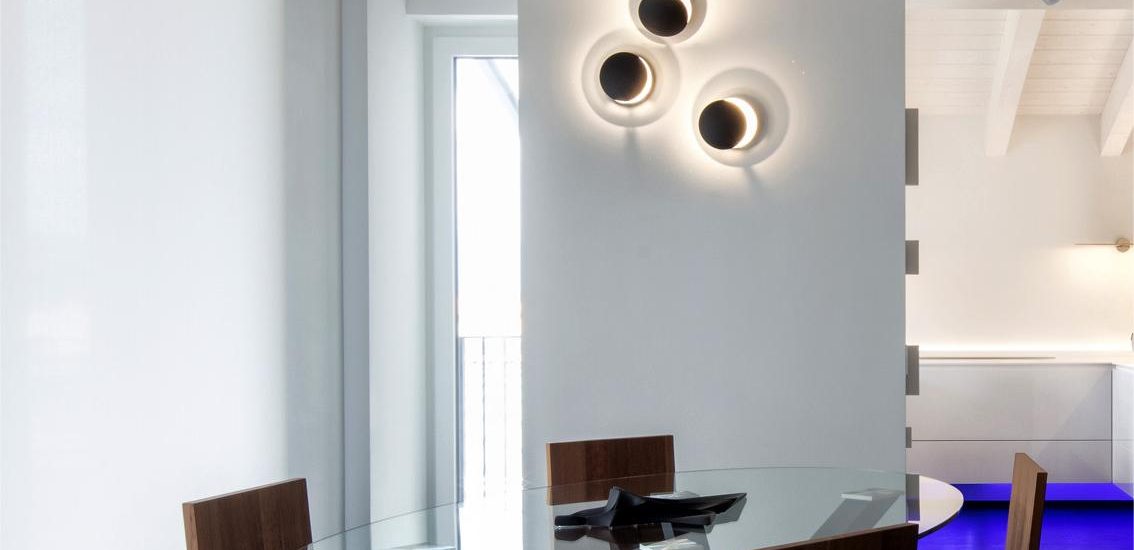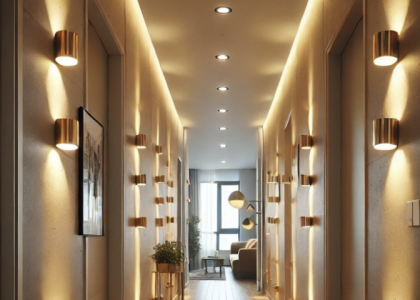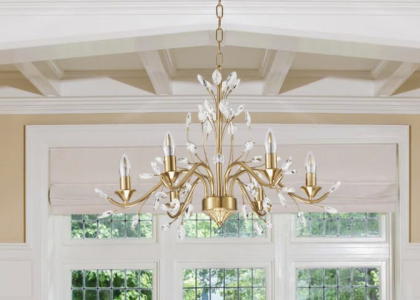Outdoor lighting plays a crucial role in the appearance and safety of your home. It not only enhances the beauty of your property but also provides security and safety for you and your family. Whether you want to illuminate your garden, highlight architectural features, or create a cozy ambiance for outdoor entertaining, outdoor lighting can transform your space and make it more inviting.
One of the key benefits of outdoor lighting is its ability to improve the overall appearance of your home. Well-placed lights can highlight architectural details, draw attention to landscaping features, and create a warm and welcoming atmosphere. By strategically placing lights around your property, you can enhance its curb appeal and make it stand out in the neighborhood.
In addition to aesthetics, outdoor lighting also plays a crucial role in ensuring the safety of your home. Illuminating dark areas around your property can help prevent accidents and injuries. It can also act as a deterrent to burglars and intruders, making your home less attractive as a target. By investing in outdoor lighting, you can create a safer environment for you and your family.
Types of Outdoor Lighting: A Comprehensive Guide
When it comes to outdoor lighting, there are various types to choose from, each serving a different purpose. Here is a comprehensive guide to the most common types of outdoor lighting:
1. Floodlights: Floodlights are powerful lights that provide broad, intense illumination over a large area. They are commonly used for security purposes or to light up large outdoor spaces such as driveways or backyard areas.
2. Path lights: Path lights are low-level lights that are typically installed along walkways or pathways. They provide a soft, subtle glow that helps guide people safely through the area.
3. Spotlights: Spotlights Wooler are used to highlight specific features or areas in your landscape, such as trees, statues, or architectural details. They provide a focused beam of light that draws attention to the desired focal point.
4. Deck and step lights: Deck and step lights are installed on decks, stairs, or other elevated areas to provide illumination and prevent accidents. They can be recessed into the surface or mounted on the side.
5. Lanterns: Lanterns are a popular choice for outdoor lighting as they add a touch of charm and nostalgia to any space. They can be hung from trees or pergolas, placed on tables, or mounted on walls.
6. String lights: String lights are a versatile option that can be used to create a festive atmosphere in your outdoor space. They can be hung across patios, wrapped around trees, or strung along fences.
7. Wall-mounted lights: Wall-mounted lights are typically installed on the exterior walls of your home. They provide both functional and decorative lighting, illuminating entryways, porches, or outdoor seating areas.
8. Post lights: Post lights are tall fixtures that are mounted on posts or poles. They are commonly used to light up driveways, pathways, or garden areas.
The Benefits of Outdoor Lighting: Safety, Security, and Aesthetics
Outdoor lighting offers numerous benefits for your home and property. Here are some of the key advantages:
1. Illuminating dark areas to prevent accidents: Outdoor lighting helps to eliminate dark spots around your property, reducing the risk of accidents and injuries. Well-lit pathways, stairs, and driveways ensure that you and your guests can navigate safely at night.
2. Deterrent to burglars and intruders: A well-lit exterior can act as a deterrent to burglars and intruders. Criminals are less likely to target a well-lit home as it increases the chances of being seen or caught. Outdoor lighting with motion sensors can be particularly effective in deterring unwanted visitors.
3. Enhancing the beauty of your home and landscape: Outdoor lighting can transform the look of your home and landscape, enhancing its beauty and curb appeal. By strategically placing lights to highlight architectural features, landscaping elements, or outdoor artwork, you can create a visually stunning environment.
How to Choose the Right Outdoor Lighting for Your Home
Choosing the right outdoor lighting for your home involves assessing your needs and goals, considering the style and design of your home, and selecting the appropriate type of lighting for each area.
1. Assessing your needs and goals: Start by identifying the areas that need lighting and determining the purpose of each space. Do you need lighting for safety, security, or aesthetics? This will help you prioritize which areas require lighting and what type of lighting is most suitable.
2. Considering the style and design of your home: Outdoor lighting should complement the style and design of your home. Consider the architectural features, color scheme, and overall aesthetic when selecting fixtures. For example, if you have a modern home, sleek and minimalist fixtures may be more appropriate, while traditional homes may benefit from lantern-style lights.
3. Choosing the right type of lighting for each area: Different areas of your property may require different types of lighting. Pathways and stairs may benefit from low-level path lights or deck lights, while trees or architectural features may be best highlighted with spotlights or floodlights. Consider the purpose of each area and choose lighting that suits its specific needs.
DIY Outdoor Lighting: Creative Ideas and Tips for Installation
If you’re feeling adventurous, there are plenty of DIY outdoor lighting projects that you can tackle to add a personal touch to your yard and garden. Here are some creative ideas:
1. Mason jar lanterns: Repurpose old mason jars by turning them into charming lanterns. Simply insert a candle or LED light inside the jar and hang them from trees or pergolas using wire or twine.
2. Solar-powered garden lights: Solar-powered lights are a great option for DIY enthusiasts as they require no wiring or electricity. Place them along pathways or in flower beds to create a magical ambiance in your garden.
3. Rope lights: Rope lights are flexible and easy to install, making them perfect for DIY projects. Use them to outline pathways, wrap around trees, or create unique shapes and designs.
When installing outdoor lighting fixtures, there are a few tips to keep in mind:
– Ensure that all electrical connections are properly sealed and protected from the elements.
– Use waterproof and weather-resistant fixtures to ensure longevity.
– Consider the placement of fixtures to avoid glare or shadows.
– Test the lighting at night to ensure that it provides the desired effect.
Solar Outdoor Lighting: Energy-Efficient and Cost-Effective Options

Solar-powered outdoor lighting is an excellent choice for those looking for energy-efficient and cost-effective options. Here are some benefits of solar outdoor lighting:
1. Energy-efficient: Solar outdoor lighting harnesses the power of the sun to generate electricity, making it a sustainable and eco-friendly choice. By using renewable energy, you can reduce your carbon footprint and contribute to a greener planet.
2. Cost-effective: While the initial cost of solar outdoor lighting may be higher than traditional lighting options, it can save you money in the long run. Solar lights do not require electricity, which means lower utility bills. Additionally, they require minimal maintenance and have a longer lifespan compared to traditional lights.
3. Easy installation: Solar outdoor lighting is easy to install as it does not require any wiring or electrical connections. Simply place the lights in areas with direct sunlight, and they will charge during the day and automatically turn on at night.
When choosing solar outdoor lighting, consider the following factors:
– The location of your property: Ensure that your property receives sufficient sunlight throughout the day for optimal charging of the solar panels.
– The quality of the solar panels: Look for high-quality solar panels that can efficiently convert sunlight into electricity.
– The brightness and duration of the light: Consider the lumens and battery capacity of the solar lights to ensure they provide adequate illumination for your needs.
Landscape Lighting: Enhancing Your Garden and Yard
Landscape lighting is a great way to enhance the beauty of your garden and yard. It can highlight the unique features of your landscape, create depth and dimension, and provide a magical ambiance. Here are some tips for using landscape lighting effectively:
1. Highlighting the beauty of your landscape: Use spotlights or well lights to highlight trees, shrubs, or other focal points in your garden. This will draw attention to their beauty and create a visually stunning environment.
2. Choosing the right type of lighting for your plants and trees: Different plants and trees have different lighting needs. Some may require direct lighting, while others may benefit from indirect or diffused lighting. Consider the type of plants in your garden and choose lighting that suits their specific requirements.
3. Creating depth and dimension: Use a combination of uplights and downlights to create depth and dimension in your landscape. Uplights can be placed at the base of trees or statues to cast dramatic shadows, while downlights can be installed in trees or on pergolas to create a soft, moonlit effect.
Outdoor Lighting for Entertaining: Creating the Perfect Ambiance
Outdoor lighting plays a crucial role in creating the perfect ambiance for entertaining. Whether you’re hosting a dinner party or having a casual get-together with friends, the right lighting can set the mood and create a cozy atmosphere. Here are some tips for choosing outdoor lighting for entertaining:
1. Choosing the right lighting for your outdoor entertaining area: Consider the size and layout of your outdoor entertaining area when choosing lighting fixtures. String lights or lanterns can create a festive atmosphere, while wall-mounted lights or spotlights can provide functional lighting for cooking or dining areas.
2. Tips for creating a cozy and inviting atmosphere: Use a combination of different lighting techniques to create a cozy and inviting atmosphere. Consider using warm, soft lighting for seating areas, dimmers to adjust the brightness, and candles or lanterns for a romantic touch.
3. Consider the placement of lighting fixtures: The placement of lighting fixtures is crucial in creating the desired ambiance. Avoid placing lights directly in the line of sight, as this can cause glare or discomfort. Instead, position lights strategically to create a warm and inviting environment.
Maintenance and Repair: Keeping Your Outdoor Lighting in Top Condition
To ensure that your outdoor lighting remains in top condition, regular maintenance and repair are essential. Here are some tips for keeping your outdoor lighting fixtures in good shape:
1. Tips for maintaining your outdoor lighting fixtures: Regularly clean your outdoor lighting fixtures to remove dirt, debris, or insects that may affect their performance. Check for any loose connections or damaged wires and repair or replace them as needed. Trim any overgrown vegetation that may obstruct the light or cause damage to the fixtures.
2. Troubleshooting common problems: If you encounter any issues with your outdoor lighting, such as flickering lights or lights not turning on, there are a few common problems you can troubleshoot. Check the bulbs to ensure they are properly inserted and functioning. Inspect the wiring for any loose connections or damage. If necessary, consult a professional electrician for further assistance.
Transforming Your Outdoor Space with Lighting
Outdoor lighting has a significant impact on the appearance and safety of your home and property. It enhances the beauty of your landscape, provides security and safety, and creates a welcoming ambiance for outdoor entertaining. By choosing the right type of lighting, considering your needs and goals, and maintaining your fixtures properly, you can transform your outdoor space into a stunning and functional environment. Invest in outdoor lighting and reap the benefits of a well-lit and inviting home.











